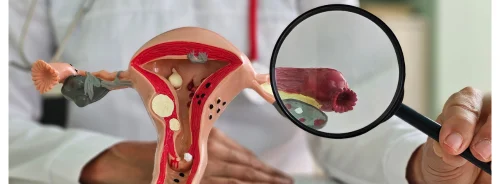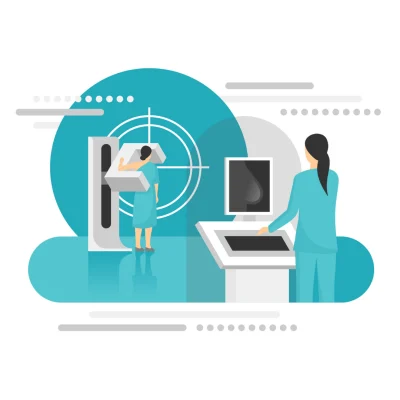Microwave breast imaging (MBI) is an emerging non-invasive technology for breast tumour detection that offers safer and more comfortable breast cancer screening. Its primary advantage over conventional screening methods (e.g., mammography) is that it neither requires ionising radiation nor breast compression. Furthermore, conventional mammography’s sensitivity is low for identifying tumours without a characteristic mass or calcification.
Galway University Hospital and National University of Ireland Galway researchers recently reported clinical trial results for an MBI system in Academic Radiology. In their report, the Wavelia Microwave Breast Imaging System Prototype (MVG Industries) was found to be safe, effective, and well-tolerated by the 25 patients. Before this study, ten other MBI prototypes were clinically tested. The current study is the first to report an MBI system’s accuracy for localising breast lesions.
MBI detects dielectric differences between potential tumours and healthy breast tissue using electromagnetic radiation that propagates and scatters within the imaging field. Probes collect scatter data, which are processed by imaging algorithms to reconstruct the breast and identify lesions. One advantage over previous MBI imaging systems is that Wavelia achieves greater accuracy partly through breast imaging in the prone position.
In their final analysis, the researchers included 24 MBI scans from 25 patients. The excluded patient had a palpable lump that was determined to be normal breast tissue. The data set included scans from 11 patients with invasive carcinoma, four cases of benign breast disease (fibroadenoma), eight patients with a breast cyst, and one with a complicated cyst. The system detected and localised benign breast lesions (N=12/13, 92%) and breast cancers (N=9/11, 82%). The two undetected carcinomas were less than 10 mm in size. No adverse events were reported. Overall responses were favourable, with 92% of the women saying they would recommend the procedure to others.
MVG Industries’ current prototype has clinical limitations. It cannot image A-cup sizes, lesions less than 10 mm, nor detect abnormal tissue near the pectoralis major. Although imaging requires seven minutes per breast, a complete MBI examination now needs 50 minutes, including patient positioning and imaging repetitions. In the near future, prototype development will focus on imaging a broader range of breast sizes, shortening the exam duration, and testing in larger trials.
Regardless, the researchers are optimistic about the technology. They conclude that the Wavelia MBI system “holds significant potential for detecting breast abnormalities while offering the patient a favourable experience over conventional mammography. This novel modality may also add significant value to the existing detection paradigm for invasive lobular breast cancer, which can evade conventional imaging.”
References:
Moloney BM, McAnena PF, Abd Elwahab SM, Fasoula A, Duchesne L, Gil Cano JD, Glynn C, O’Connell, A, Ennis R, Lowery AJ & Kerin, MJ (2021) “Microwave Imaging in Breast Cancer - Results from the First-In-Human Clinical Investigation of the Wavelia System.” Acad Radiol. https://doi.org/10.1016/j.acra.2021.06.012











